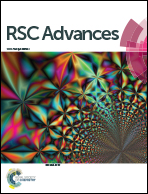3-Methoxybutan-2-one as a sustainable bio-based alternative to chlorinated solvents†
Abstract
Methylation of acetoin with dimethyl carbonate was performed in a sustainable one-step process, with improved process mass intensity (PMI) and atom economy compared to previously published methods. The resulting product, 3-methoxybutan-2-one (MO) was successfully evaluated as a bio-based solvent, while both Kamlet–Taft solvatochromic parameters and Hansen solubility parameters demonstrate its potential viability in the substitution of chlorinated solvents. MO exhibited a low peroxide forming potential and a negative Ames mutagenicity test and was successfully used as a solvent in a Friedel–Crafts acylation (79% yield compared to 77% in dichloromethane) and for N-alkylations. MO is a renewable oxygenated solvent, with the potential ability to substitute carcinogenic halogenated solvents in some applications.



 Please wait while we load your content...
Please wait while we load your content...